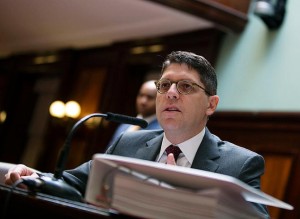
Photo by William Alatriste/New York City Council
Mark Peters, Commissioner of the New York City Department of Investigation (“DOI”), has issued preliminary findings and recommendations on DOI’s investigation into delays and cost overruns of the Emergency Communications Transformation Program (ECTP), which have been provided to the Mayor and his relevant senior staff. DOI’s preliminary findings, attached to this release include:
- ECTP struggled with vague lines of authority and ineffective governance;
- ECTP suffered from a lack of advanced planning with respect to specifications and objectives of the
- ECTP failed to engage an independent integrity monitor to audit the progress and cost of the project.
As a result of these findings, DOI’s recommends the City should:
- empower one individual to lead ECTP and make executive decisions;
- establish the specific scope of each ECTP component moving forward, making that plan flexible so it can
- engage an integrity monitor to identify potential risks of fraud, corruption, waste, and mismanagement,
“ECTP has suffered from significant mismanagement which at timeswas nothing short of governmental malpractice. The good news is: We can fix this,” said DOI Commissioner Mark G. Peters. “Going forward, the City cancorrect these problems and our preliminary report recommends several initial steps that are necessary to begin that recovery.”
A team of DOI investigators are currently reviewing hundreds of thousands of documents regarding contracts, progress reports, and other related records and conducting witness interviews, in addition to visiting the emergency call-taking and dispatching facilities in the Bronx and Brooklyn.
DOI has not yet identified any overt illegal activity in connection with the delays and cost overruns; however, because DOI is still receiving documents regarding contractor invoices a conclusive review of ECTP’s budget or billings has not beencompleted. Since this is the first of three reports DOI will issue on this investigation, the results of those reviewswill be contained in our subsequent reports.
Under the old system before 2009, when an emergency caller phoned 911, the call was answered by an NYPD call taker who collected caller and incident information. If the caller was reporting a fire, the police call taker would initiate a conference call with an FDNY call taker and repeat the process. The FDNY Call Taker would collect similar FDNY-related information from the caller and forward that information to a third person, an FDNY Dispatcher, to trigger the appropriate response.
The implementation of Unified Call Taking was the first major milestone of the Emergency Communications Transformation Program (ECTP) , a multi-year initiative started 5 years ago to enhance call taking and dispatch operations for NYPD, FDNY and FDNY EMS. Under the program, each agency has benefitted (supposedly? we think they have?) from upgraded computer dispatch systems, improved integration and data sharing between agencies, new 911 telephony networks and software, and other significant improvements.
Under Unified Call Taking, improved technology and training have (again, supposedly?) allowed the police call taker to collect both NYPD and FDNY incident information and then electronically share and coordinate the appropriate emergency response with dispatchers from either agency, which allows the caller to give the information one time to one call taker, rather than multiple times to multiple call takers. This elimination of a redundant step for FDNY calls has been meant to enable quicker processing of the caller’s critical information and reduce the overall response to the call. The findings call into question the efficacy of the program.













Follow Us